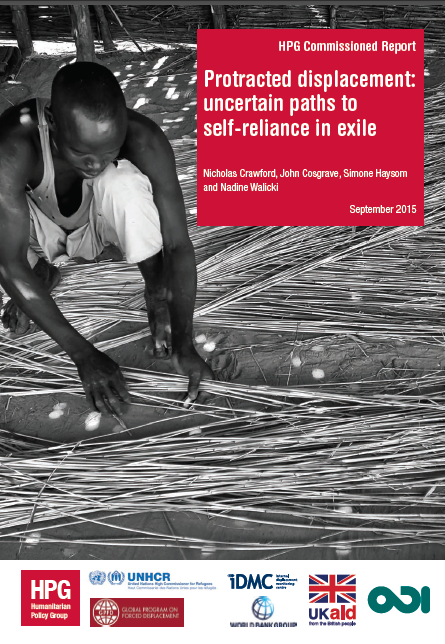Publication
30 September 2015
Protracted displacement: uncertain paths to self-reliance in exile

Drawing an exact picture of the global state of protracted displacement is an approximate and incomplete exercise. Each situation of protracted displacement is its own unique and complex system and the data available does not allow for the dimensions and characteristics to be understood.
Evidence for the effectiveness of international interventions aimed at promoting the self-reliance and livelihoods of people in protracted displacement is weak. However, analysts and aid professionals have moved away from an aid-centric approach towards a more complex understanding of the kinds of environments that can encourage self-reliance and sustainable livelihoods among the displaced. More work is needed to understand how to better support displaced people who find their own paths to sustainable livelihoods.
This report, produced by Overseas Development Institute’s Humanitarian Policy Group, which IDMC contributed to, analyses data on displaced people, reviews the literature on livelihoods of people in protracted displacement and presents a pilot tool to begin understanding the opportunities for self-reliance and livelihood assistance in displacement.
Full report
Protracted displacement: uncertain paths to self-reliance in exile
Report highlights
Ten things to know about refugees and displacement
Annexes and Data
Figures of displaced people, country characteristics and humanitarian assistance
Annexes 2-7: Methodology and Typology 2
Case studies
Annex 8 - Case studies: Colombia, Darfur, Jordan and Uganda